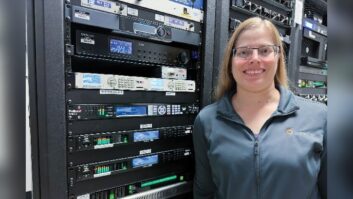WASHINGTON — In comments to the FCC, Crawford Broadcasting Director of Engineering W. Cris Alexander argued that the broadcaster “has interests on both sides of the FM translator interference issue” — meaning that the company and its affiliates currently are licensees of 15 AM and nine FM commercial stations plus nine FM translators. This, Crawford says, means they have a “unique perspective on the issue and perhaps a more balanced view.”
In light of that, Alexander submitted comments on behalf of Crawford regarding the proposed amendment of Part 74 of the Commission’s Rules Regarding FM Translator Interference (MB Docket No. 18-119). He expressed support for the commission’s reform efforts and offered additional suggestions. (Cris Alexander also is a contributor to Radio World, which was not involved in the filing.)
[Read about the commissioners’ opinions on the proposed changes.]
First, Alexander, writes: “We believe that the provisions of §74.1203(a) and §74.1204(f) should be harmonized so that predicted interference to existing listeners outside the translator 60 dBµ contour can be addressed prior to grant of the translator application. What constitutes ‘interference’ is well defined in the FCC’s rules by means of codified protection ratios, and we believe these ratios should be applied to predicted interference cases prior to grant of a legitimately-objected translator application.”
He notes that this is advantageous because it would help to prevent “drawn-out and often expensive interference complaint prosecution” by eliminating cases in which “a proposed translator will ‘pass the test’ provided by §74.1204(f) because there is no predicted interference to existing full-power station listeners within the translator 60 dBµ contour, but after operation commences, existing listeners located outside the translator 60 dBµ contour begin receiving interference.”
Additionally, this is important, Alexander says, because ofen “the damage is done in fairly short order after the translator signs on — those existing listeners displaced by the translator interference often tune elsewhere and may not ever return.”
Alexander also supports “the proposed modification of Section 74.1233(a)(1) of the Rules to define an FM translator’s change to any available channel as a minor change as a means of mitigating legitimate interference to an existing full-power broadcast station.” This is consistent with the idea that it’s important to offer “fast and complete resolution of interference issues.”
He also concurs that six is a good minimum number of listener complaints to be used to claim translator interference, saying that a “station bringing this many complaints undoubtedly has a real interference issue.”
Regarding the complaints themselves, Alexander agrees that listener complaints should include sufficient information “for the translator licensee to follow up… determine the listener’s exact location, and make measurements and tests at that location.” He notes that this would also ensure that the complainant is not affiliated with the full-power station.
In fact, Alexander writes that it would be bettter to remove the middleman — the complaining listener — from the process as soon as possible because complaining listeners “ may be uncooperative,” hard to contact or could even be bribed to withdraw their complaint.
Instead, he suggests, the resolution should be determined through “a technical showing that all interference has been eliminated.” Specifically, he writes, “any showing by the translator licensee should include a U/D study based upon the F(50, 50) and F(50, 10) field strength charts contained in Section 73.333, unless the use of the Longley-Rice propagation model is indicated based upon established criteria.”
Also, Alexander argues “there should be a full-power station field strength value beyond which no complaint of actual or predicted interference will be considered actionable.” However, he says that they do not “believe that 54 dBµ is the appropriate value for this cutoff field strength.” Rather, Crawford says, “a better compromise would be 48 dBµ, which represents an electric field strength value of 250 µV/m. We believe this value to be appropriate for all classes of FM stations and do not recommend that a different value be adopted for class B or B1 stations.”
He explains that a recent listener survey indicated that “92% of the respondents regularly listen in areas beyond the 54 dBµ contour and with predicted field strengths well below that value;” and he said the same is likely the case for class B1 stations which are protected to 57 dBµ, “it is likely that there are listeners to even lower field strength signals than to those with a 60 dBµ protected contour.” He cited also cited a 1975 study and report that indicated there was “some argument for a value of 47 dBu” field strength as a cutoff for interference complaints.
Read his comments online here. Comments on MB Docket No. 18-119 are due July 6 and reply comments are due Aug. 6.












